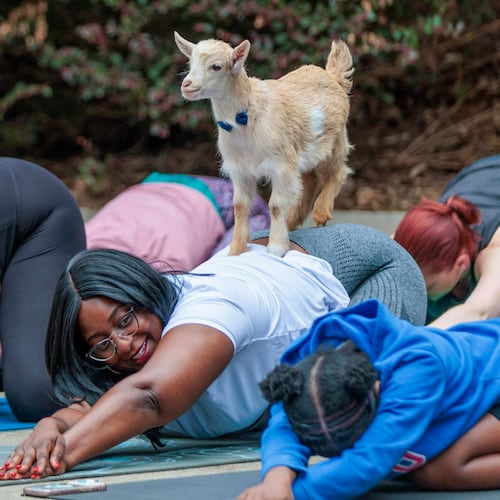It’s a peaceful winter day in late January. The neighborhood is quiet; the air is chilly. Hungry titmice, chickadees, house finches, cardinals and other yard birds peck away at suet cakes and seeds in bird feeders.
Then, pandemonium breaks out. Panicked songbirds, uttering alarm calls, scatter in all directions as a “blue flash” suddenly swoops down among them. An unlucky cardinal is not quick enough and is snatched up by the lightning-quick marauder.
The blue flash is either a sharp-shinned hawk or a Cooper’s hawk, two similar-looking species that belong to the hawk genus accipiter. They also have been called “blue darters” because of their blue-gray backs and blurring swift movements.
Songbirds make up a major portion of their diets — especially that of the slender sharp-shinned, whose diet may be 90 percent songbirds. The sharp-shinned is Georgia’s smallest hawk.
Because of their appetite for songbirds, a sharp-shinned or a Cooper’s may be the hawk most likely spotted around your yard this time of year — perhaps waiting patiently to make a meal of an unwary songbird at your feeder.
Despite the seemingly easy pickings at bird feeders, though, the secretive accipiters probably get most of their songbird meals in woods and other wild places. If a hawk does start hunting regularly in your yard, the best thing to do is to take down your feeders for a couple of weeks, the Cornell Lab of Ornithology advises. The hawk will move on and the songbirds will return when you put your feeders back up.
In Georgia, accipiters are more frequently spotted in winter. They are infrequent nesters here during summer.
In general, accipiters have long legs, short, rounded wings and very long tails, which allow them to navigate skillfully at top speeds through dense woods and forests in pursuit of songbirds and mice. They flap more than soar.
Soaring is more the behavior of Georgia’s other genus of hawks, the buteos, which include the red-shouldered, broad-winged and red-tailed hawks. Buteos in general are larger, sturdier and have broad wings and shorter tails.
In the sky: From David Dundee, Tellus Science Museum astronomer: The moon will be last quarter Saturday night. All of the visible planets rise right now in the east: Mercury, low in the sky just before sunrise; Venus, about an hour before sunrise; Mars, five hours before sunrise; Jupiter, before midnight; Saturn, about two hours before sunrise.
About the Author
Keep Reading
The Latest
Featured

